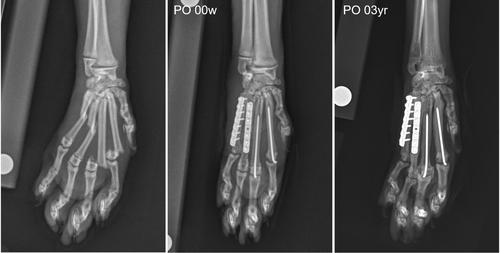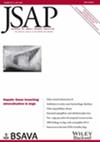Clinical experience and outcomes using a commercially available micro-plating system for metabone fractures in dogs and cats: 10 cases (2019-2023)
Abstract
Objectives
To report the clinical experience and long-term outcome following metabone fracture stabilisation using a commercially available micro-plating system (VetKISS, 1.0-mm, IMEX Veterinary, USA).
Materials and Methods
Consecutive, client-owned cats and dogs weighing <7 kg, with traumatic metabone fractures stabilised using VetKISS micro-plates were prospectively enrolled with informed owner consent. Clinical and radiographic parameters were recorded. Either short-term or long-term clinical and radiographic follow-up was required for study inclusion.
Results
Four cats and six dogs were enrolled and operated by one of two board-certified surgeons. Bodyweight ranged from 1.9 to 6.6 kg. Number of metabones fractured: all four (60%), three (30%) and two (10%). Anatomical alignment was restored for each metabone. External coaptation was not used in any case. Radiographic follow-up documented clinical or bony union in all cases. Mean time to clinical union was 51 days. One major complication (screw removal) and two minor complications (partial construct failure) were observed. All patients made a complete functional recovery at the time of documented union. Long-term follow-up was available in five cases. No lameness (evaluated independently by both surgeons) or plate sensitivity was noted.
Clinical Significance
This is the first clinical evaluation of the VetKISS for metabone fracture repair, and includes long-term follow-up. Results demonstrated complete functional recovery and 100% clinical union rates in all patients, with acceptable complication rates. This system can be considered for metabone repair in patients weighing <7 kg without the use of external coaptation.


 求助内容:
求助内容: 应助结果提醒方式:
应助结果提醒方式:


